Astoria |
||||||||||||||||||||||||||||||||||||||||||||||
|
|
||||||||||||||||||||||||||||||||||||||||||||||
Crochet top with round yoke, lace pattern, worked top down in DROPS Paris. Size: S - XXXL.
DROPS 175-15 |
||||||||||||||||||||||||||||||||||||||||||||||
|
CROCHET INFO: At beginning of every round with treble crochets replace first treble crochet with 3 chain stitches. Finish round with 1 slip stitch in 3rd chain stitch. At beginning of every round with double treble crochets replace first double treble crochet with 4 chain stitches. Finish round with 1 slip stitch in 4th chain stitch. At beginning of every round with triple treble crochets replace first triple treble crochet with 5 chain stitches. Finish round with 1 slip stitch in 5th chain stitch. INCREASE TIP (evenly spaced): To calculate how to increase evenly, use the number of stitches increases are done over (e.g. 84 stitches) and divide this number by number of increases to be done (e.g. 24) = 3.5. I.e. in this example increase after alternately approx. every 3rd and 4th stitch. DECREASE TIP: Decrease 1 treble crochet by working 2 treble crochets together as follows: * Make 1 yarn over, insert hook in next treble crochet, get yarn, make 1 yarn over, pull yarn through the 2 first loops on hook *, repeat from *-* one more time, make 1 yarn over and pull yarn through all 3 loops on hook (= 1 treble crochet decreased). PATTERN: See diagrams A.1 and A.2 (A.1a and A.2a shows how rounds begin and end). Choose diagram for your size. ---------------------------------------------------------- TOP: Work in the round top down. YOKE: Begin with crochet hook 5 mm and Paris, work 100-103-109-115-121-124 chain stitches and form a ring with 1 slip stitch in first chain stitch. Insert a marker thread on the beginning of the round = mid back. Work 4 chain stitches (= 1 double treble crochet) - READ CROCHET INFO, work 1 double treble crochet in each of the next 3-0-0-0-0-3 chain stitches, * skip 1 chain stitch, work 1 double treble crochet in each of the next 5 chain stitches *, repeat from *-* 15-16-17-18-19-19 more times = 84-86-91-96-101-104 double treble crochets. Work 1 round with double trebles and increase 24-30-29-32-31-40 double trebles evenly - READ INCREASE TIP (evenly spaced) = 108-116-120-128-132-144 double trebles. REMEMBER THE CROCHET TENSION! Insert 4 marker threads in piece without working as follows: Insert 1st marker thread after 8-9-10-11-11-13 double trebles. Insert 2nd marker thread after another 38-40-40-42- 44-46 double trebles, 3rd marker thread is after another 16-18-20-22-22-26 double trebles and 4th marker thread after another 38-40-40-42-44-46 double treble crochets. There are now 8-9-10-11-11-13 double treble crochets left until mid back. Work A.1b (choose diagram for your size). A.1a shows how round begins and ends), AT THE SAME TIME increase double treble crochets evenly over the 38-40-40-42-44-46 stitches in each side. Number of stitches between the 2 markers mid front and mid back is constant (= 16-18-20-22-22-26 stitches). Increase in the different sizes as follows: Size S and M: Increase 14-17 stitches in each side on 2nd and 5th round in A.1b, then increase 16-18 stitches on 6th-8th round = 196-220 stitches. NOTE! See round marked with arrow for when yoke is done in the different sizes. Size L, XL, XXL and XXXL: Increase 14-16-18-19 stitches in each side on 2nd, 5th and 8th round in A.1b, then increase 16-16-20-21 stitches on 9th-9th-11th-11th round = 236-256-280-300 stitches. NOTE! See round marked with arrow for when yoke is done in the different sizes. Work next round in all sizes as follows: NOTE: in sizes S and XL crochet around the chain stitches instead of in the chain stitches. Work 1 double treble crochet in each of the first 27-30-32-35-39-43 stitches, work 4-4-6-6-6-8 chain stitches under sleeve, skip 44-50-54-58-62-64 stitches for sleeve, work 1 double treble in each of the next 54-60-64-70-78-86 stitches, work 4-4-6-6-6-8 chain stitches under sleeve, skip 44-50-54-58-62-64 stitches for sleeve, work 1 double treble in each of the remaining 27-30-32-35-39-43 stitches on round. Piece measures approx. 17-18-20-21-23-25 cm measures from neck edge and down vertically. BODY: = 116-128-140-152-168-188 stitches. NOW MEASURE THE PIECE FROM HERE! Work 1 triple treble crochet in every stitch. When piece measures 5 cm, increase 4-12-0-8-12-12 triple treble crochets evenly = 120-140-140-160-180-200 triple treble crochets. Cut the yarn. To fit the pattern symmetrically mid front and mid back on top displace beginning of round as follows: Skip the first 15-5-5-15-5-15 triple treble crochets on round and fasten strand with 1 double crochet in next triple treble crochet. Begin on 2nd round in diagrams and work A.2a (shows how round begins and ends), work A.2b (= 6-7-7-8-9-10 repetitions). On last round in diagram increase trebles. To make the pattern symmetrical mid front and mid back increase the same number of trebles in each side. Increase 20 trebles in each side evenly between mid back and fan in pattern mid front on top. Increase 40 trebles in total evenly in all sizes = 160-180-180-200-220-240 trebles. Continue from 2nd round in A.2a and A.2b (= 8-9-9-10-11-12 repetitions on round). When diagrams have been worked vertically, work 2nd and 3rd round 1 more time. Piece measures approx. 62-63-65-66-68-69 cm from neck edge mid back and down. Fasten off. NECK EDGE: Begin mid back of neck and fasten strand with 1 double crochet. Work 1 double crochet in every chain stitch but work only in the chain stitches worked with treble crochets = 84-86-91-96-101-104 double crochets. Fasten off. SLEEVE EDGE: Begin mid under sleeve and work 4 chain stitches (= 1 double treble crochet). Work 1 double treble crochet in every stitch and work 3 double treble crochets around the outermost stitch in transition between yoke and body AT THE SAME TIME decrease 13-15-16-14-12-11 double treble crochets evenly on round – READ DECREASE TIP = 41-45-50-56-62-67 double treble crochets. Fasten off. |
||||||||||||||||||||||||||||||||||||||||||||||
Diagram explanations |
||||||||||||||||||||||||||||||||||||||||||||||
|
||||||||||||||||||||||||||||||||||||||||||||||

|
||||||||||||||||||||||||||||||||||||||||||||||
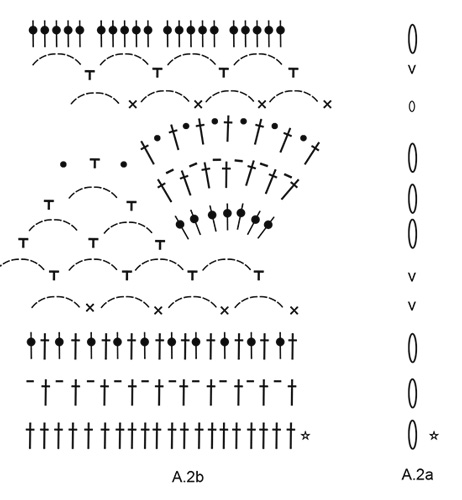
|
||||||||||||||||||||||||||||||||||||||||||||||
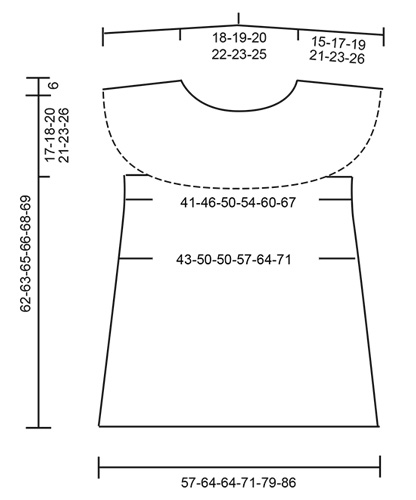
|
||||||||||||||||||||||||||||||||||||||||||||||
|
Have you made this or any other of our designs? Tag your pictures in social media with #dropsdesign so we can see them! Do you need help with this pattern?You'll find tutorial videos, a Comments/Questions area and more by visiting the pattern on garnstudio.com. © 1982-2024 DROPS Design A/S. We reserve all rights. This document, including all its sub-sections, has copyrights. Read more about what you can do with our patterns at the bottom of each pattern on our site. |
||||||||||||||||||||||||||||||||||||||||||||||





























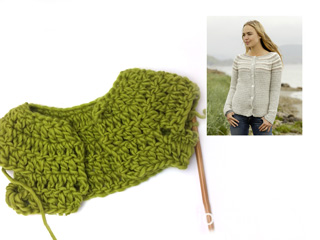




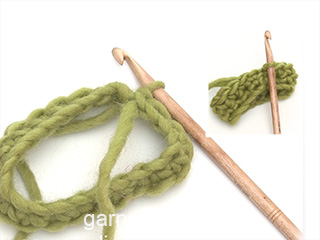


















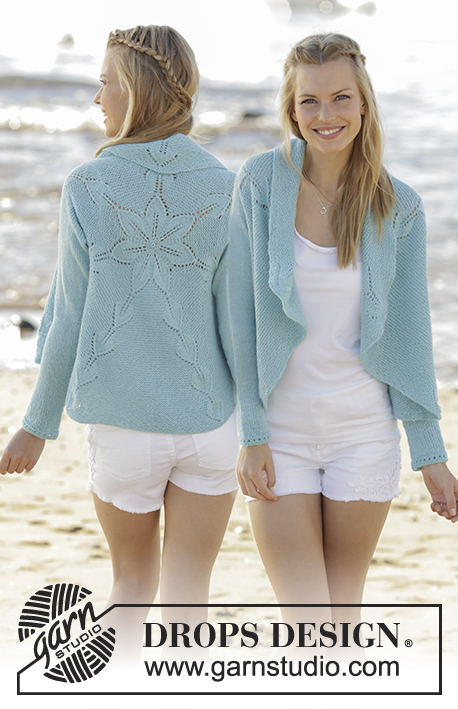

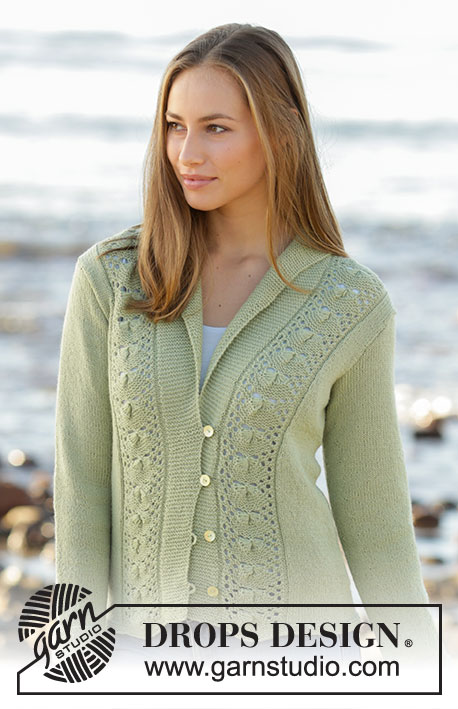






Comments / Questions (53)
Hallo, ich würde die Tunika gerne in Grüße M häkeln jedoch, jedoch versteht ich diesen Part nicht "HÄKELINFO lesen, je 1 Doppelstäbchen in die nächsten 3-0-0-0-0-3 Luftmaschen, * 1 Luftmasche überspringen, je 1 Doppelstäbchen in die nächsten 5 Luftmaschen *, von *-* noch weitere 15-16-17-18-19-19 x wiederholen = 84-86-91-96-101-104 Doppelstäbchen." Ganz besonders mit den 3-0-0-0-3. Ich weiß zwar, dass die Zahlen für die Größen stehen, jedoch nicht, wie ich das häkeln soll.
31.07.2022 - 07:26DROPS Design answered:
Liebe InfiernoC, Für Größe M arbeitest du: 4 Luftmaschen häkeln (= 1 Doppelstäbchen) – HÄKELINFO lesen, * 1 Luftmasche überspringen, je 1 Doppelstäbchen in die nächsten 5 Luftmaschen *, von *-* noch weitere 16 x wiederholen = 86 Doppelstäbchen.
31.07.2022 - 19:15I am wondering if the legend isn't incorrect in chart A2b. It says: "x = 1 treble crochet in stitch", and I'm fairly certain that it should be "x = 1 single crochet in stitch". Please fix? Or let me know if I'm mistaken :)
02.07.2022 - 07:45DROPS Design answered:
Dear Gunilla, yes, it's a typo, it's a single crochet (US) or double crochet (UK) in the stitch. We will correct it as soon as possible. Thank you.
02.07.2022 - 16:15What do the numbers 1 and 2 mean next to the 2nd and 3rd rows of the pattern A1.b?
23.07.2021 - 18:58DROPS Design answered:
Dear Mrs Wylie, the numbers refer to the number of row, the first row is not the first row in the diagram but only shows previous row - see explanation to the star in the diagram key. Happy crocheting!
26.07.2021 - 08:11Hello! I want to omit the yoke entirely and just start under that making that large band before the open lace work be a tube top with the lace body. How could I accomplish this? Or what row does the yoke stop and that part begins?
30.06.2021 - 02:38DROPS Design answered:
Dear Mrs Ostrom, the lace pattern under body starts when it says to work A.2 (diagram for the lace pattern) - we are unfortunately not able to adjust each pattern to each individual request. Please contact the store where you bought the yarn for any further individual assistance. Thanks for your comprehension.
30.06.2021 - 07:26At the end of the yoke instructions, “ Work next round in all sizes as follows: ” (where the chain stitches are added to create the arm opening), it starts with a group of treble crochet stitches, then the chains, then its a group of double treble crochets, followed by the 2nd set of chain stitches, and ending with another group of double crochets. Should that first set of treble crochets actually be double crochets so the height of the row stays consistent?
16.08.2020 - 19:56DROPS Design answered:
Dear Mrs Ferron, it should be double treble (= UK English) / treble (= US English) all this row, patern will be edited, thanks for letting us know. Happy crocheting!
17.08.2020 - 09:00Hej...läser man mönstret "bara" från höger till vänster vid varje varv?...Mvh Liselott
29.07.2020 - 07:04DROPS Design answered:
Hej Liselott, ja når du virkar runt läser du diagrammet från höger till vänster. Du kan også se hvordan man læser et hæklediagram i lektionen nederst i opskriften. God fornøjelse!
29.07.2020 - 15:33In the diagram explanation it does not have the line with an open circle shown in the A.1b diagram in rounds 2, 5, 8 & 11. Is it suppose to be a treble crochet around chain stitch? The only one close to it is the line with a black circle thru it listed as a double crochet around chain stitch which only appears in the A.2b diagram.
14.07.2020 - 14:51DROPS Design answered:
Dear Mrs Ferron, are you talking about the last symbol in diagram key? The symbol with a whilte circle is a treble crochet around chain space. Happy crocheting!
14.07.2020 - 15:38Just finished it. I stopped after 2nd fan pattern as it was getting too long and that made a nice edge.
06.07.2020 - 20:36When increasing the sides for the sides of the yoke, it says to increase 17 for both sides on rounds 2 and 5, then 18 for 6 and 8. However does this mean that it wants me to increase both sides by 18? or 9 for each side? I end up with 36 extra stitches and I'm very confused by that.
05.01.2020 - 09:23DROPS Design answered:
Dear Mrs Mason, you increase 17 sts in each side on 2nd and 5th round in A.1b (= 34 sts increased in total on each of these both rounds), there are 116sts + 34 +34 = 184 sts and then increase 18 sts in each side on 8th round = 184 + 18+18= 220 sts. Happy crocheting!
06.01.2020 - 09:09I didn't get the sectioning in the beginning... I am doing the xxxl size and I don't believe the number of stitches is correct
02.11.2019 - 20:10DROPS Design answered:
Hello! All patterns are translated from Norwegian and you can always check the original pattern for measurements and calculations. Happy crocheting!
02.11.2019 - 21:40